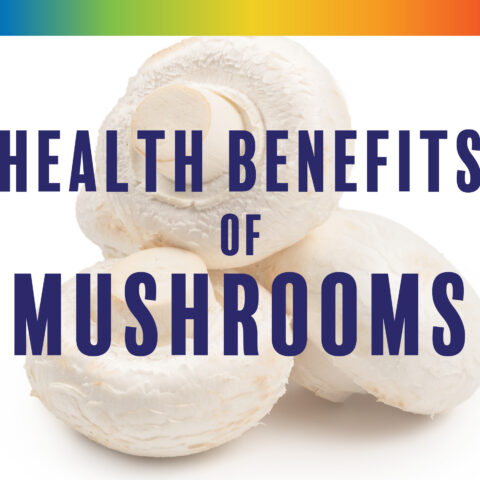Looking to Lose Weight? Look for Foods with High Thermic Effect

Many people try The Paleo Diet® to lose weight. That’s because following The Paleo Diet can rev up your metabolism, helping you to lose weight faster and without doing much more than simply following the diet. The Paleo Diet also boosts energy, which in turn can help you burn even more calories. [1,2] One of the metabolic reasons that The Paleo Diet helps many people lose weight is that The Paleo Diet emphasizes foods with high thermic effect.
What Is the Thermic Effect of Food?
There are four major ways your body burns calories throughout the day. The thermic effect of food, while not the biggest, is one of them. Here are the four and approximately how much each contributes to our total energy expenditure:[3]
- Basal metabolic rate (60%): This refers to the calories we burn at rest in order to maintain normal functioning. It fuels processes like breathing, controlling our body temperature, and cell growth. Think of it as the total energy you’d burn if you stayed in bed all day.
- Intentional exercise (10%): When we walk or run, we burn more calories. Depending on how often you exercise, this percentage might actually be a bit less or a lot more.
- Non-exercise activity thermogenesis (NEAT) (20%): This refers to movement throughout the day as part of our regular daily activity like cooking, cleaning, or fidgeting.
- Thermic effect of food (TEF) (10%). The calorie burn required to digest and metabolize our food.
Notice that of the calories we burn every day, the bulk of them—about 60 percent—are burned through basal metabolic activity. [3] This makes sense given our place as homeothermic animals. Our bodies use significant amounts of energy just to heat and cool our bodies, unlike most fish (poikilotherms) that can conform to the environmental temperature.
You might be surprised to learn that intentional exercise only accounts for about 10 percent of the calorie expenditure for the typical person. [3] Of course, this percentage can increase significantly for athletes or people with careers that require them to exert themselves for extended periods of time.
About 20 percent is attributed to non-exercise movements throughout the day. That means the remaining 10 percent of calories are expended via the thermic effect of food, or how many calories it takes to burn what we eat. [3]
The important point to note here is that not all calories are created equal and different foods can have different thermic effects.
The Thermic Effect of Carbs, Protein, and Fat
We eat a combination of proteins, fats, and carbohydrates with every meal.
Each of these macronutrients breaks down a bit differently. A gram of fat provides about nine calories of energy, while both a gram of carbohydrate and a gram of protein supply about four calories. [4]
Here’s the interesting part: Fats are the easiest for our bodies to digest, meaning they have a very low thermic effect. Only about zero to three percent of the nine calories each gram provides is used to burn or store it.
Carbs require a bit more at five to 10 percent of the four calories they offer. Proteins are the most difficult to digest and assimilate, using 20 to 30 percent of the four calories they offer. [5] The metabolic and biochemical pathways to digest proteins are much more complex, and therefore require more energy to process, in turn increasing the thermic effect of any given meal.
If you’re looking to lose weight, aim to eat about 25-30 percent of your total calories from protein sources. You’ll burn more calories per day, and you’ll also feel fuller longer
To Lose Weight, Get More Protein!
Herein lies one of the ways The Paleo Diet can aid weight-loss without the need to relentlessly count calories. The diet emphasizes the consumption of more natural, high-quality protein. By doing so, you can essentially eat the same number of calories as you normally would, but you can lose more weight by taking advantage of the thermic effect of food. In essence, you take in the same number of calories, but your caloric output increases without the need for additional activity.
The recommended daily allowance (RDA) for protein is a modest 10 percent of your total caloric intake. [6] However, research finds that upping your protein a bit can help you lose weight, along with other health benefits. [7]
How to Calculate How Much Protein You’re Getting
Of course, most foods cannot be categorized strictly as protein or not. Most foods have a nutrient profile that includes a mix of protein, fat, and carbs.
One great online resource you can use is the USDA Nutrient Database. Simply go to the site, type in a food item, and search. You’ll find the average amount of protein, fat, and carbs of that item, plus a list of the vitamins and minerals in each serving.
The Bottom Line
The thermic effect of food refers to the ways our bodies burn calories when digesting a meal. Fats and carbs are digested quite easily, but protein takes a bit more effort for our bodies to put to work.
If you’re looking to lose weight, aim to eat about 25-30 percent of your total calories from protein sources. You’ll burn more calories per day, and you’ll also feel fuller longer—a win-win!
References
[1] Cordain L. et al. 2005. Origin and evolution of Western diet: health implications for the 21st century. American Journal of Clinical Nutrition 81:341–54. https://academic.oup.com/ajcn/…;
[2] Cordain, L. 2011. The paleo diet: lose weight and get healthy by eating the foods you were designed to eat. John Wiley and Sons, New York. 266pp.
[3] Calcagno M, Kahleova H, Alwarith J, et al. The Thermic Effect of Food: A Review. J Am Coll Nutr. 2019;38(6):547-551. doi:10.1080/07315724.2018.1552544 [Full text]
[4] Murray, R. K. (2003). Harper’s illustrated biochemistry. New York: McGraw-Hill.
[5] Tappy L. Thermic effect of food and sympathetic nervous system activity in humans. Reprod Nutr Dev. 1996;36(4):391-397. doi:10.1051/rnd:19960405
[6] National Institutes of Health. 2021. Dietary reference intakes. https://ods.od.nih.gov/HealthInformation/Dietary_Reference_Intakes.aspx
[7] Rodriguez NR. Introduction to Protein Summit 2.0: continued exploration of the impact of high-quality protein on optimal health. Am J Clin Nutr. 2015;101(6):1317S-1319S. doi:10.3945/ajcn.114.083980
[8] Pesta, D.H., and V.T. Samuel. 2014. A high-protein diet for reducing body fat: mechanisms and possible caveats. Nutrition and Metabolism 11(53). https://doi.org/10.1186/1743-7…;
Bill Manci
Bill Manci is the president of a fisheries and aquaculture consulting company and he has worked with The Paleo Diet since 2002.
More About The Author




